Immortality
Frontiers of Aging
S. Jay Olshansky
Bruce A. Carnes
(Norton)
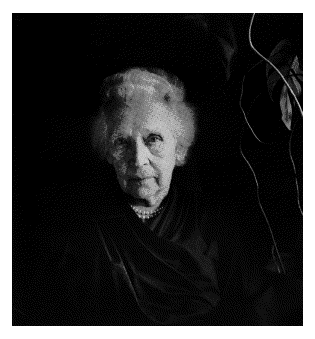
My friend Mark's father is an exception to the actuarial tables. He is now 95. He is a living example of the paradox of The Quest for Immortality.
Revolutionary advances in medicine have made it possible for him to survive so long. At the same time, he lives alone, is practically deaf, has arthritis and his vision is going. He has had several heart attacks, has trouble controlling his bladder and swallowing. He is so absent-minded that he calls Mark six or eight times a day to say: "Can you come over and fix the heater" (the heater works fine; it's just that the old man is cold because of poor circulation; he forgets.)
"When are we going to get together?" he asks, again and again. "Never," mutters Mark. This plea has been going on for ten years, and the limit has been reached. Often Mark simply doesn't pick up the receiver when the caller identifier shows that it is his father.
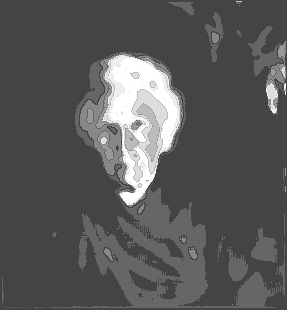 Life was much harsher for our ancestors.
Life was much harsher for our ancestors.
Common ailments like broken bones and teeth, strained muscles, cuts, animal and insect bites, puncture wounds, and infections would have been life-threatening events. It is probable that as many as half of all babies born died before reaching their first birthday, and the mothers who delivered them did so without any kinds of medical intervention --- often dying in the process. Of the children who did survive, only a small percentage would have lived long enough to have children of their own.
The result? "Few lived past their twentieth birthday and a forty-year-old would have been considered an elder member of society." Even 100 years ago, "the environment was harsh, living and working conditions were dreadful, and life expectancy was low (between 45-49 years) by comparison to today."
You and I (and our fathers and mothers and the rest of humanity) are disposable. We are cars --- to use the authors' image --- that have been over-engineered to perform well through the reproductive stage of our lives. But then, "Death is the way nature discards the old, worn-out bodies ... Evolution is totally indifferent to whether species survive."
P. B. Medawar called age "the genetic dustbin." It's that time of our life --- what is called the "post-reproductive period" --- when
damaging and lethal genes can be expressed without penalizing the reproductive productivity of the organisms carrying them.
Diseases like Huntington's chorea and Lou Gehrig's disease are more likely to be "expressed in a greater number of people." Those who live beyond eighty-five are confronted by "a veritable minefield of aging-related diseases and disorders that rise in frequency with increasing age."
that many of the genes responsible for cancer late in life are intimately involved in the regulation of cell growth and differentiation early in life. A river of DNA ... flows through time, not space. It is a river of information, not a river of bones and tissues: a river of abstract instructions for building bodies, not a river of solid bodies themselves. Is there nothing we can do to prolong life? The Quest for Immortality
advises that a visit to the health-food store to stock up on vitamins, minerals, dried sea-weed, DLPA, CoEnzyme Q, ginsing, EDTA Chelator and megadoses of Vitamin C might not be worth the money. In fact, the only items that have proven to help one survive are the traditional ones: sleep eight hours a night, stay away from cigarettes and fatty foods, exercise, and don't be drinking yourself into a stupor. Further, studies have shown that "the longevity benefits of adopting healthy lifestyles rarely add up to more than a few hundred days on average, and often much less ... It is an inescapable reality that every person is genetically unique. This quality makes it impossible for any longevity benefit derived from lifestyle modification to have the same effect on everyone..." Unfortunately, frailty and disability in old age are the norm, not the exception. As modern medicine continues to manufacture more survival time, there is a growing epidemic of nonfatal chronic conditions among the elderly that have a profound impact on the quality of their lives and those who love them --- conditions like vision and hearing loss, osteoporosis, osteoarthritis, dementia, and Alzheimer's disease, to name a few. Science at the Frontiers of Aging is a technical book aimed at boneheads. The authors employ a language that protects those of us who flunked high school biology or chemistry. Written in the simplest style, it delivers a bleak message. The vital organs that make it possible for you and I to survive have built-in failure mechanisms that are going to deliver us to grave at a pre-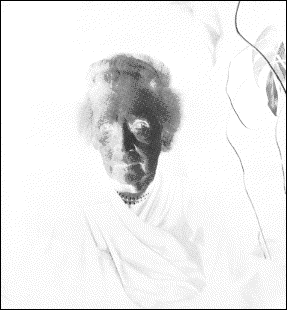 Obviously we should do something about it. We want to age gracefully, die in full possession of our faculties, right? According to the authors, it isn't so simple. The ailments that will come to us in what they used to call "the golden years" are mostly pre-
Obviously we should do something about it. We want to age gracefully, die in full possession of our faculties, right? According to the authors, it isn't so simple. The ailments that will come to us in what they used to call "the golden years" are mostly pre-
You and I are merely "genetic transport vehicles ... genes have been hitching a ride in these vehicles through the ages." Richard Dawkins has written: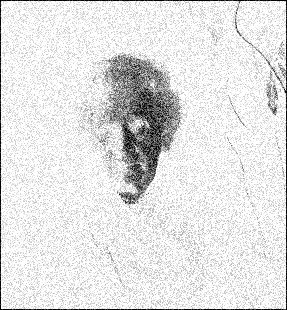 Olshansky and Carnes are telling us that you and I are programmed to live a certain number of years and, outside of accidents or suicide on the down side, there is very little that we can do to change that. The physical problems of aging --- as well as age itself --- are not just another sickness: we are programmed to fall apart like the Wonderful One-Horse Shay; the revolutions in sanitation and health care and astonishing new medicines have merely redistributed death "from the young to the old."
Olshansky and Carnes are telling us that you and I are programmed to live a certain number of years and, outside of accidents or suicide on the down side, there is very little that we can do to change that. The physical problems of aging --- as well as age itself --- are not just another sickness: we are programmed to fall apart like the Wonderful One-Horse Shay; the revolutions in sanitation and health care and astonishing new medicines have merely redistributed death "from the young to the old."
The Toltecs
Frank Diaz
(Bear & Co.)
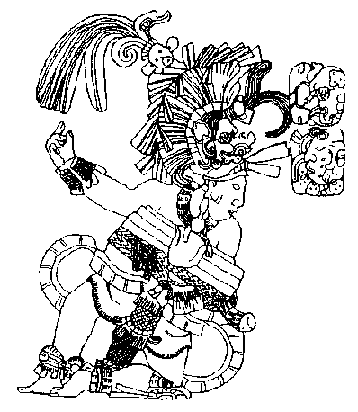
The narrative begins as Quetzalcuatl's warlike mother swallows the jade bead that impregnates her and leads to his birth. As a boy he answered the seven questions of the man-eating serpent and as a man he was asked by the Toltecs to be their king and priest.
Under his rule the kingdom was without sorrow or hunger. He lived in a palace built by the wind, and wore a tiger skin hat and a beard made of green and yellow feathers. But when he became careless, the Toltecs began to suffer calamities. Evil sorcerers conspired against him and introduced human sacrifice into the kingdom.
They got him drunk on mushroom-laced wine, and he sent for his sister and slept with her. Humiliated and penitent, he left town, followed by a jeering crowd. The sorcerers will was thus accomplished; the Toltecs were driven from their land.
Wherever he traveled, Quetzalcoatl studied local beliefs and customs and left disciples to transmit the Toltec ways. He exhorted his followers to give up their possessions and become like children. He performed miracles: caused valleys to rise up and mountains to tumble.
When his work was finished, he donned his green mask and cloak embroidered with serpents, ascended a pyre, and acting alone, set himself on fire. The fire burned for a day and a night, and on the eighth day after his death, he ascended into the sky and appeared as a star.
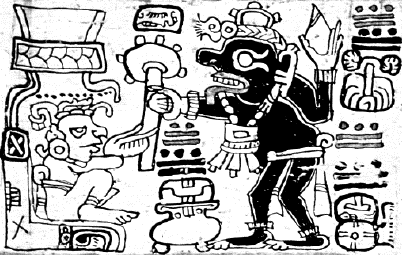 After four years he returned to Earth and told his disciples to remember what they had seen and to be his witnesses. His final words to his followers asked them to obey just three commandments:
After four years he returned to Earth and told his disciples to remember what they had seen and to be his witnesses. His final words to his followers asked them to obey just three commandments:
- try to make friends with the one who is everywhere in everyone at each moment;
- be at peace with all men; and
- do not despise time, for you do not know if you will live again or if you will recognize your own face there.
Then he went to the edge of the sea, threw his cloak of serpents upon the water, where it became a raft, and he sailed away toward the Eastern horizon.
Does any of this sound familiar? The astonishing similarities of origin myths from around the world are a fascinating aspect of the human psyche. Of course, the differences are also profound. They lead to speculation about how these highly civilized, non-European cultures might have developed, absent the Spanish conquest.
This is not just a scholarly question; it is part of current thought in modern Mexicans and Americans of Mexican descent. The Gospel of the Toltecs could have value to these people, especially the artists among them.
My doubts about the book arise from the new-agey preface, and the effusive praise from other writers published by the same press, perhaps hinting at self-interest. Moreover --- Ortiz's sources necessarily demand subtle interpretations: Spanish manuscripts, recounting their understanding of a culture that disappeared 300 years before they arrived; the stone carvings or glyphs, left behind by the Toltecs (pictured in the chapter headings); and the oral history of their few descendants.
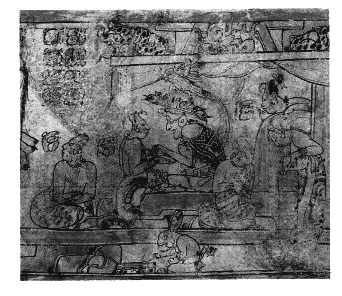 The Gospel of the Toltecs is an educated guess, as all such books must be. It is written (or translated) in annoying (but simple) biblical prose. It purports to be the first coherent version of the life and teachings of the hero who became a symbol ... Quetzalcoatl, the Feathered Serpent.
The Gospel of the Toltecs is an educated guess, as all such books must be. It is written (or translated) in annoying (but simple) biblical prose. It purports to be the first coherent version of the life and teachings of the hero who became a symbol ... Quetzalcoatl, the Feathered Serpent.
Time has destroyed most of what the Toltecs left behind, leaving nothing but mystery, speculation, and those elegant stone carvings that engage the mind and lead us to wonder about what was, and what might have been.
As a Young Calf
The Story of One Man,
Two Cows, and the
Feeding of a Nation
Peter Lovenheim
(Harmony)
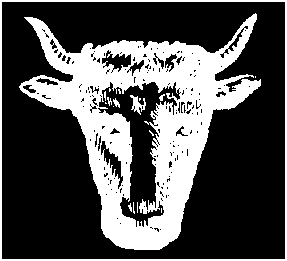
Thus the Muse burst upon him at that moment: "What would it be like if we were to take a cow, any cow, and follow it for its entire life-cycle, from its incubation to its death, from gestation to hamburger? That would be a kick, wouldn't it?" Thus Portrait of a Burger as a Young Calf was born.
Lately, for some reason, we hapless reviewers have found ourselves knee-deep in addle-pated histories-in- Now we have a portrait of the would-be hamburger on the hoof. Despite a powerful feeling that McDonalds, Burger King, Wendy's, Jack-in- By the way, while all this sawing apart is going on in the meat-packing plant, the author finds himself salivating, uncontrollably. We can forgive this, but we cannot forgive him for high-jacking the title of our favorite coming-of-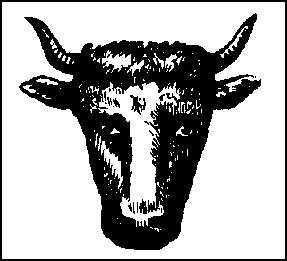 I hope you will excuse me for not following through on this one, gore and all. I did take a peek at the last chapter, but gave up (again) when I got to the kill-floor and they were cutting away the cow's face and cutting off the legs and tossing them "into a blue barrel labeled INEDIBLE." If you are nuts to know where your hamburgers are coming from, my sour words should not keep you from hurrying out and getting this one. From what little I read, it's obvious that Lovenheim is in love with careful detail, melding stomach-churning descriptions with a frosty language --- a reporter in love with nothing but the Facts, Ma'am.
I hope you will excuse me for not following through on this one, gore and all. I did take a peek at the last chapter, but gave up (again) when I got to the kill-floor and they were cutting away the cow's face and cutting off the legs and tossing them "into a blue barrel labeled INEDIBLE." If you are nuts to know where your hamburgers are coming from, my sour words should not keep you from hurrying out and getting this one. From what little I read, it's obvious that Lovenheim is in love with careful detail, melding stomach-churning descriptions with a frosty language --- a reporter in love with nothing but the Facts, Ma'am.
Pages read --- 52